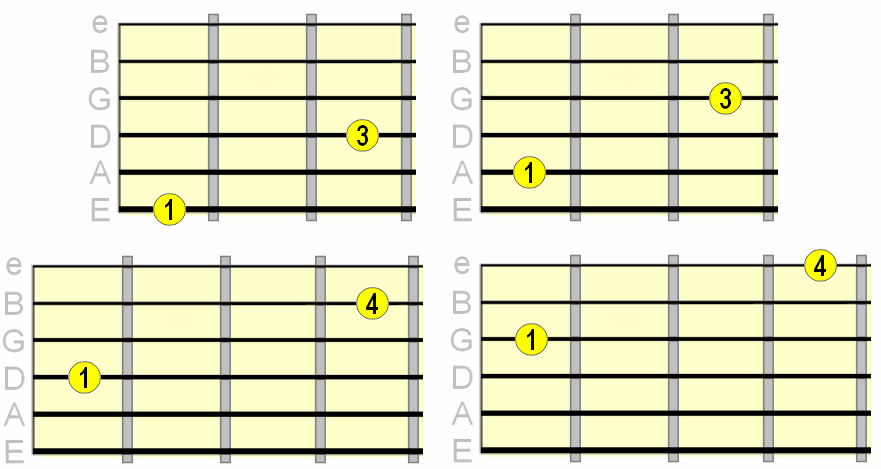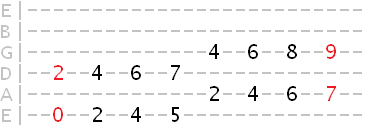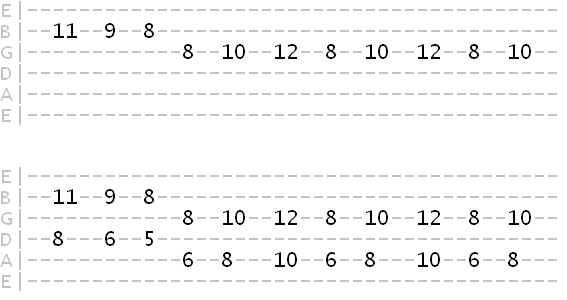Home › Q&A
How to Mimic The Vocal Melody in Your Guitar Solos
Question by Sean
(Ontario, Canada)
How do I make my guitar solo sound like words/vocals from my songs? I do not mean doing this by using a talk box although that sounds cool too.
In the song, Tired of Waiting by The Trews, they make the solo mimic the vocal melody and it sounds great.
See the song on YouTube and skip to 2:10 in the song to hear the solo/interlude in which the guitar sounds like the vocals from the verse/chorus.
I've heard a few other guitarists do this and I really enjoy it.
If there's a way to do this and some theory behind it I would love to know.
Thank you so much for any explanation.
Playing the Vocal Melody on Guitar
Great question, Sean. Many songs that involve catchy/hooky vocal lines tend to repeat them as an instrumental part.Let's take your example of Tired of Waiting by The Trews (song should automatically start at 2:10)...
In this particular example, the guitarist is using what are known as octave double stops, sometimes called "playing octaves".
This basically doubles up each note and gives it that extra presence and power - perfect for strong, defined melodic lines...

Here's how you'd finger these octaves on each string (make sure you collapse your fretted fingers back to touch and mute the unwanted strings)...

If ever you want to use this technique, the easiest process is to work out the melody on the 5th and 6th strings and then add the octave to each note.
It's up to you whether you just play the octaves on the lowest two strings (better if you want to slide between notes) or play them across the higher strings as well.
For example, you could play the entire major scale using octaves in one position (red marks the root of E)...

Or just across the 6th string...

Or across the 6th and 5th strings...

Another common technique for mimicking the vocal line on guitar is to just play the melody across a single string, sliding between the notes.
Sliding helps to slur the phrasing and give it more of a vocal feel. For example, Kurt Cobain plays a single string solo in Smells Like Teen Spirit that mimics his vocals from the verse and bridge...
Using bends also helps to recreate vocal nuances.
Working Out the Vocal Melody
Working out the vocal line on guitar is a great ear-fret co-ordination exercise.Most of the time, the vocal melody will be confined to a particular scale, meaning you don't have to spend so long using trial and error to find the notes.
In major keys, most vocal lines are taken from the major scale (which also includes major pentatonic).
In minor keys, most vocal lines are taken from the natural minor scale (which also includes minor pentatonic).
So when you're working out a melody by ear, and you know the key of the song (not always, but usually the first chord of the verse and/or chorus), then the above two scales are a good starting point. If the vocals are using a different scale, you may only have to sharpen/flatten a note or two.
It's also common for vocal lines to be arpeggiated. This means the sequence of notes follows the notes of the chord being played. So as well as trying out notes from the related scale, try picking the notes of the chords in different sequences as a lot of vocal melodies will be "hidden" within the chord harmony itself.
The first four notes in the Trews song from earlier are in fact E major arpeggiated - E G# B E (1 3 5 1). The melody as a whole is taken from the E major scale.
Ear Training Exercises
To help you practice transferring vocal melodies to the fretboard, I've lined up some songs below with famously catchy vocal lines. Check the lyrics I've written above the video and then hit the play button to hear how they're sung.After you've listened a few times, try to play the vocal melody on your fretboard, either using single notes or the octave technique from earlier.
Above each video I'll provide you with the key and scale, so all you have to do is find it on the fretboard and play through the scale until you pick out the melody. The "answers" are further down!
Let's start really simple...
Final Countdown by Europe
Play the lyrics: "It's the final countdown..."F minor - F natural minor scale
We Are The Champions by Queen
Play the lyrics: "We are the champions, my friends..."F major - F major scale
Strong by Robbie Williams
Play the lyrics "You think that I'm strong, you're wrong, you're wrong..."Eb major - Eb major scale
In Too Deep by Sum 41
Play the lyrics: "Because I'm in too deep and I'm trying to keep..."E major - E major scale
Of course you can have fun trying this exercise over other songs you know. Youtube has pretty much every popular song you can think of.
This kind of ear training will also transfer into picking up instrumental leads by ear and even help with picking up chord progressions.
Answers
Final Countdown...
We Are The Champions...

Strong...

In Too Deep...

Share Your Comments
|
||
|
||
|
||
|
||
|
||